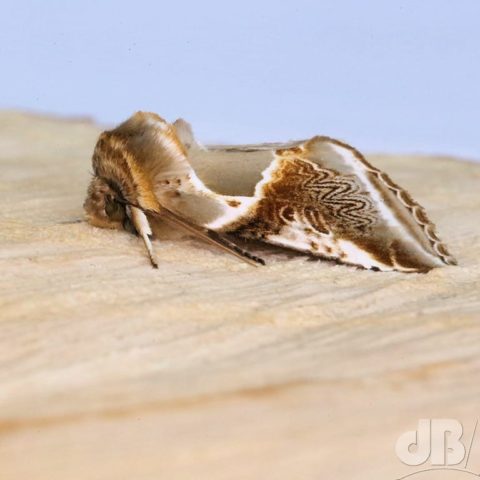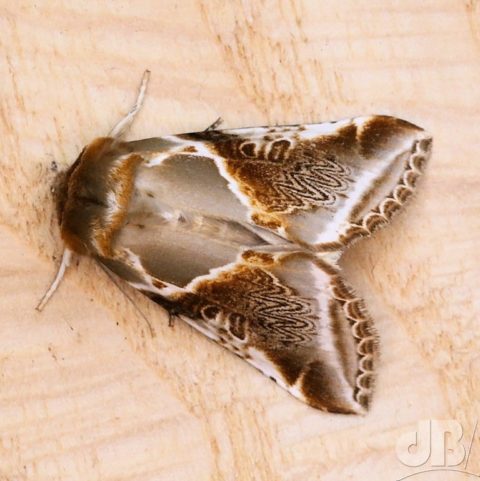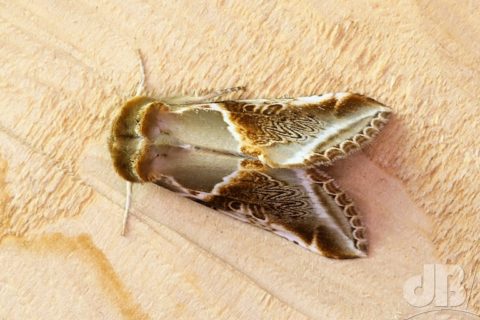The Lepidoptera, the scaly-winged insects we know as moths and butterflies, have become something of a citizen science preoccupation for me over the last year or so, hopefully at least a few of you noticed.
I’ve talked about how many of these insects are perhaps dowdy and drab but there is such huge variety in their form, shape, patterns, and behaviour and so many are brighter and more colourful and intriguing than the moths we call butterflies in English. With more than 2500 species in the British Isles, what’s an amateur naturalist going to do, but study, photograph, and write about them?

Yesterday one of my colleagues on the Facebook group “UK Moths Flying Tonight” posted a photo of a moth known as Buff Arches, Habrosyne pyritoides (Hufnagel, 1766). I was envious and hoping to see one today, and there here we are, there was one in the trap, hence my photos. The UK Moths site says of Buff Arches:
The combination of smooth grey, white and russet-brown make this delicately-marked moth one of the prettiest, especially when observed at close range.
Now, many Lepidoptera are patterned and colourful. Often the markings help camouflage the insect making it look like a leaf or a piece of twig. Buff Arches is particularly well marked and intricate and, at first, I couldn’t see through its disguise.

My expert lep friend Leonard Cooper pointed out that it’s not trying to look like a leaf or a twig, it actually resembles a shard of flint. Buff Arches, in other words, has evolved a disguise that makes it look like a piece of naturally napped stone. It is common in wooded areas of the southern half of Britain but is absent from Scotland. There’s a clue in the species’ scientific name as to what the people who named it thought it looked like – Habrosyne pyritoides, that term “pyritoides” literally means resembling pyrite (the mineral iron pyrite, iron sulfide*). And, if you didn’t picture it as a sherd of flint, then thinking of it as a lump of mineral might fool you.

Incidentally, The Cinnabar is so-called for another mineral connection, the red of its wings is very same hue as mercury sulfide, commonly known as cinnabar.
Meanwhile, that Citizen Science stuff I mentioned, well it’s basically about recording what turns up in the garden, I’ve had at least a couple of Cambridgeshire rarities – Light-feathered Rustic and The Spinach – so those have been logged with the County Recorder. You can keep up to date with all the other leps in my logbook here.